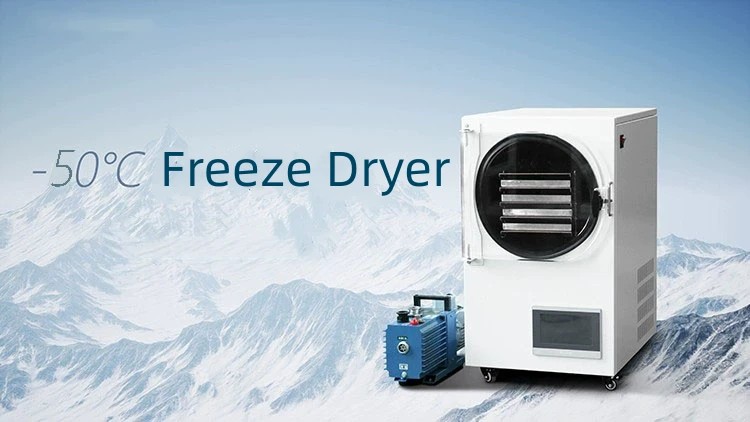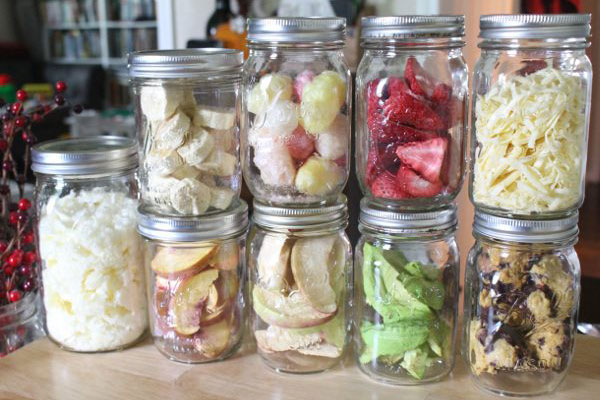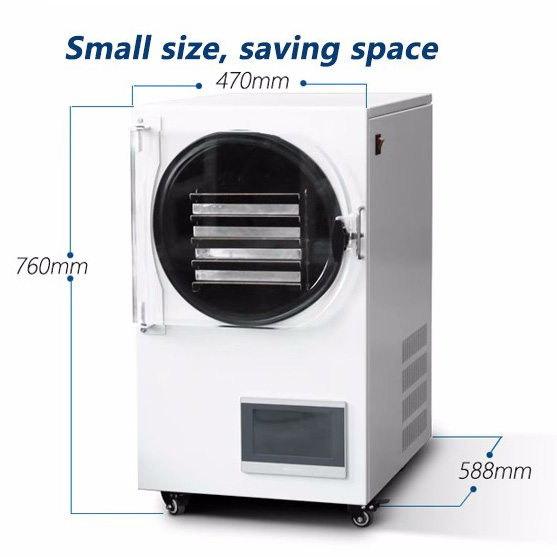Freeze-dried vegetables are increasingly popular for their health benefits. What would you like to know about them? Let’s explore more together.
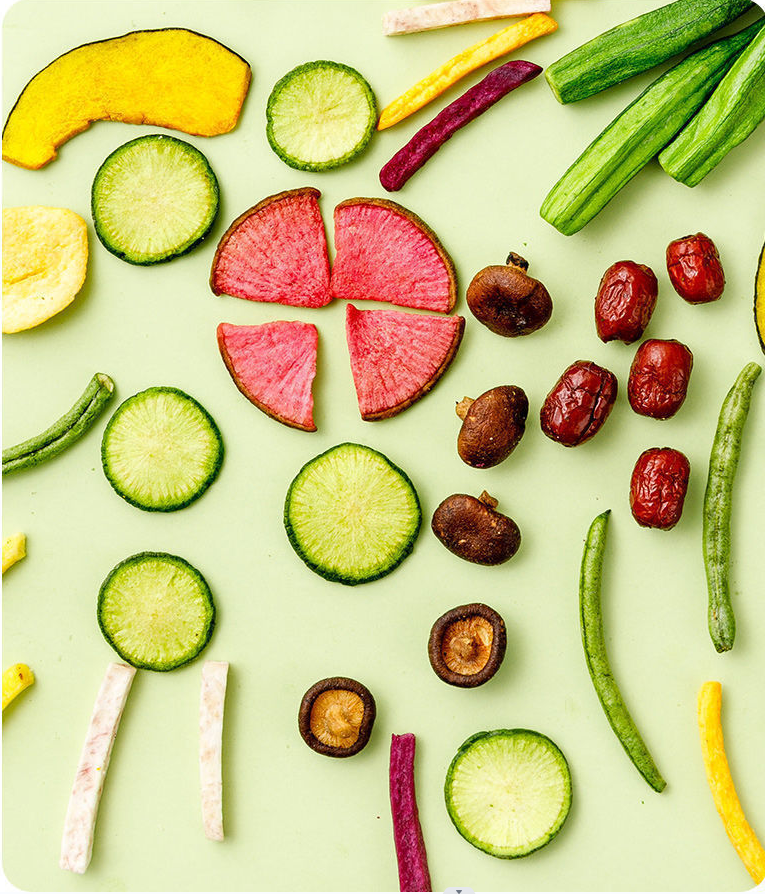
Production Process of Freeze-Dried Vegetables
Selection and Preprocessing of Vegetables:
- Start with fresh, ripe vegetables. Freshness ensures better taste and nutritional value.
- Wash the vegetables to remove soil, impurities, and inedible parts.
- Cut vegetables into uniform small pieces or slices as needed to ensure even drying during the freeze-drying process.
Pre-cooling and Freezing:
- Place the prepared vegetables in a freeze dryer for rapid freezing, typically at very low temperatures (-30°C to -50°C). This step forms ice crystals quickly to prevent cell structure damage.
Primary Drying (Freeze Drying):
- After freezing, the freeze dryer gradually reduces the pressure to create a vacuum environment, allowing the ice crystals to sublime directly into vapor.
- This critical step requires precise control of temperature and pressure to ensure effective sublimation without melting.
Secondary Drying:
- After primary drying, a small amount of moisture may remain in the vegetables. The purpose of secondary drying is to remove this moisture completely.
- This step occurs at slightly higher temperatures to remove moisture that was not fully eliminated during the freeze drying process.
Packaging and Storage:
- Once drying is complete, it is advisable to use vacuum-sealed bags for packaging. Store the vegetables in a dry, cool place, avoiding direct sunlight and high temperatures.
- Thanks to the low temperature vacuum environment, freeze-dried vegetables retain most of their nutritional value.
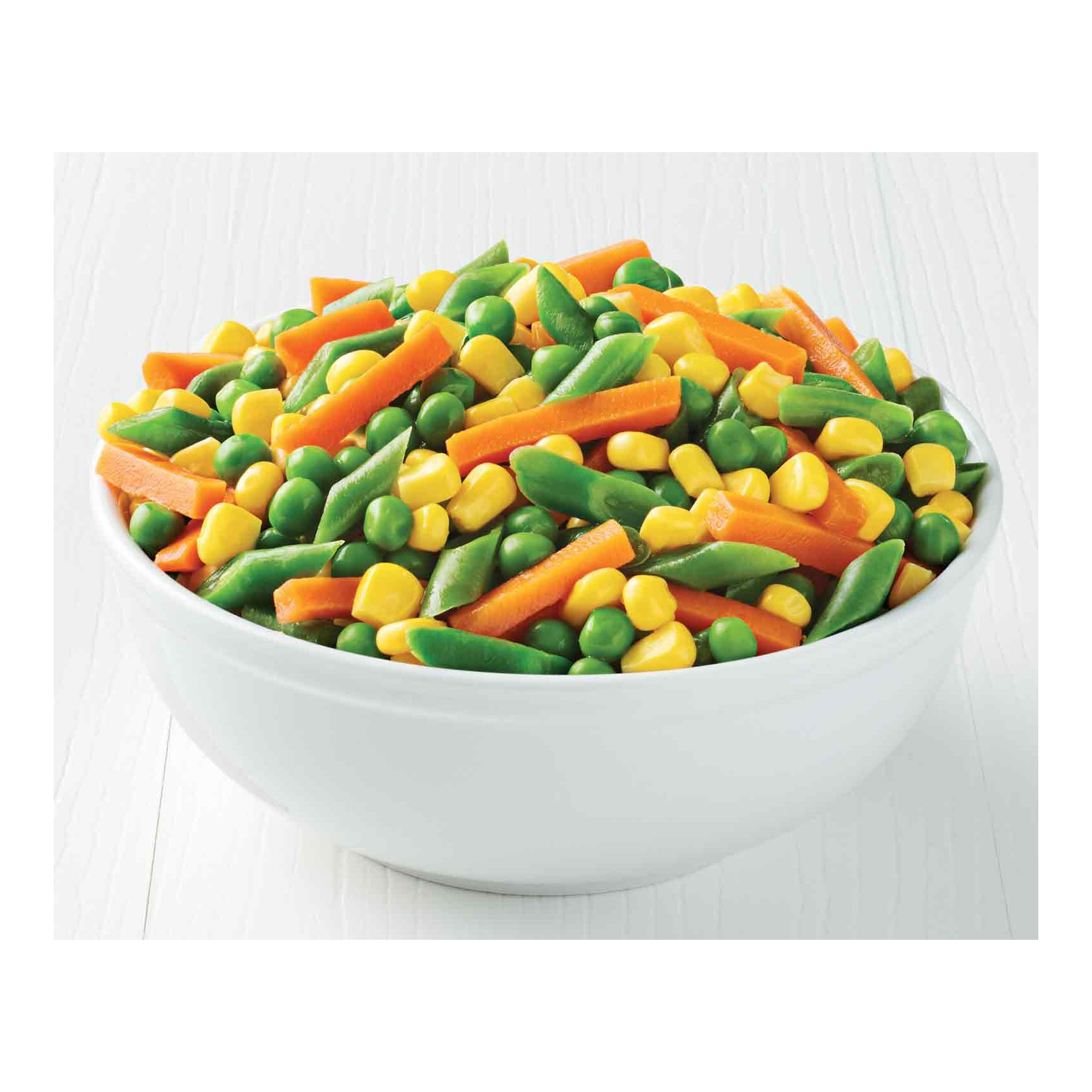
Nutritional Benefits
Vitamin Retention:
- The rapid freezing and drying in low-temperature vacuum conditions help preserve fragile vitamins such as vitamin C and B, which are often lost during traditional hot drying processes.
Minerals and Fiber:
- Minerals like calcium, potassium, and iron are retained well since freeze drying does not involve high temperatures. Dietary fiber structure is also preserved, aiding in digestive health.
Proteins and Other Nutrients:
- Proteins and other essential nutrients are well-preserved in the freeze drying process. Protein structure and function are less likely to denature at low temperatures, thus maintaining nutritional value.
Antioxidants:
- Most antioxidants, such as flavonoids and carotenoids, are retained during freeze drying. This process results in minimal loss, helping in anti-aging and disease prevention.
Taste and Appearance:
- Although freeze drying primarily aims to preserve nutrients and facilitate storage, freeze-dried vegetables can regain a texture and taste close to that of fresh vegetables upon rehydration, aiding in nutrient absorption.
- Freeze-dried vegetables generally do not require preservatives or other chemical additives because most moisture is removed, making it difficult for microbes to survive, thus naturally extending shelf life.
Texture and Quality of Freeze-Dried Vegetables
Texture:
- Crispiness: Freeze-dried vegetables are typically crispy before rehydration due to complete moisture removal. This crispiness makes them popular as snacks or salad toppings.
- Texture after hydration: Once mixed with water, freeze-dried vegetables can approximate the texture of fresh vegetables, although they may not fully return to their original state. The degree of texture recovery depends on the type of vegetable and the quality of the freeze drying process.
Flavor Retention:
- Freeze-drying by removing moisture at low temperatures helps preserve the original flavors and aromas of vegetables, maintaining a more authentic taste compared to hot air drying or cooking processes.
- The flavor of freeze-dried vegetables is usually more concentrated because removing water intensifies flavor components.
Color and Appearance:
- Freeze-dried vegetables generally maintain good color, making them visually closer to fresh vegetables and more appealing than traditional drying methods.
- With proper packaging and storage conditions, freeze-dried vegetables can retain their color and appearance for a long time.
Nutritional Retention:
- As mentioned, freeze-dried vegetables retain most vitamins, minerals, and antioxidants, which are beneficial for health and help maintain the quality and taste of the vegetables.
Rehydration Capability:
- A key quality of freeze-dried vegetables is their ability to rehydrate quickly to near-fresh conditions, especially useful in emergencies or when quick meal preparation is needed.
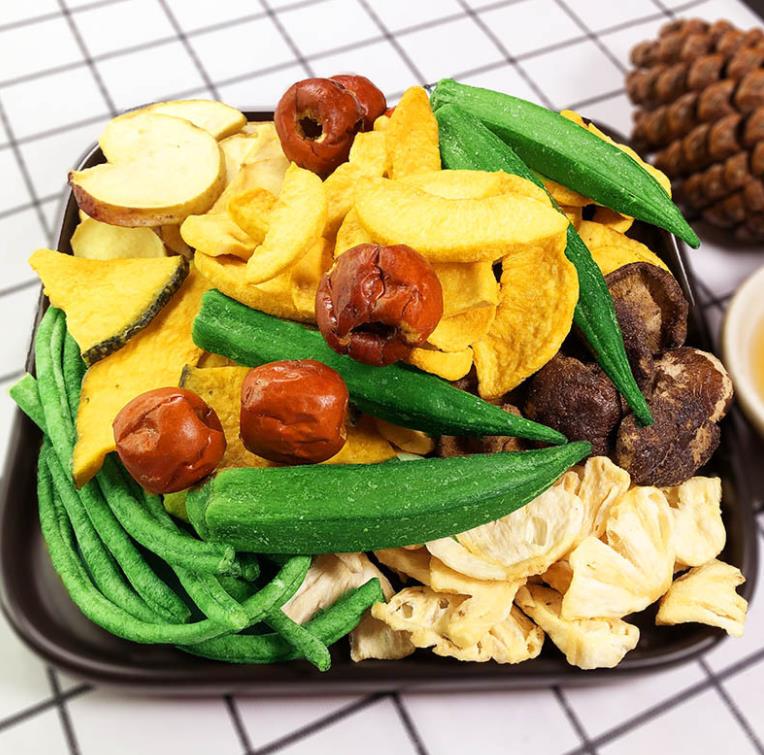
Applications of Freeze-Dried Vegetables
Freeze-dried vegetables, with their long shelf life, ease of transport, rich nutrition, and near-fresh taste, are widely used in various fields.
Emergency Food Supply:
- Due to their long storage capability and easy transport, freeze-dried vegetables are ideal for disaster response and emergency situations, providing necessary nutritional support during earthquakes, hurricanes, or other emergencies.
Outdoor Activities:
- For hiking, mountaineering, camping, and other outdoor activities, freeze-dried vegetables offer a lightweight, nutritious, and easy-to-prepare food option. They quickly restore upon rehydration, making them convenient for consumption in wilderness settings.
Convenient Foods and Fast-Moving Consumer Goods:
- In the fast-paced modern lifestyle, freeze-dried vegetables are used in quickly prepared foods such as instant soups, ready meals, and healthy snacks. They are also common in pre-prepared meals, offering consumers a quick and healthy dining solution.
Health and Nutritional Supplements:
- Freeze-dried vegetables can be made into powders for health drinks, dietary supplements, and nutrition bars, helping those who cannot access fresh vegetables to supplement vitamins and minerals.
Space Food:
- Lightweight and nutritious, freeze-dried vegetables are an excellent choice for space food. They reduce weight and retain most of the nutrients and flavors, making them an ideal choice for astronauts’ diets.
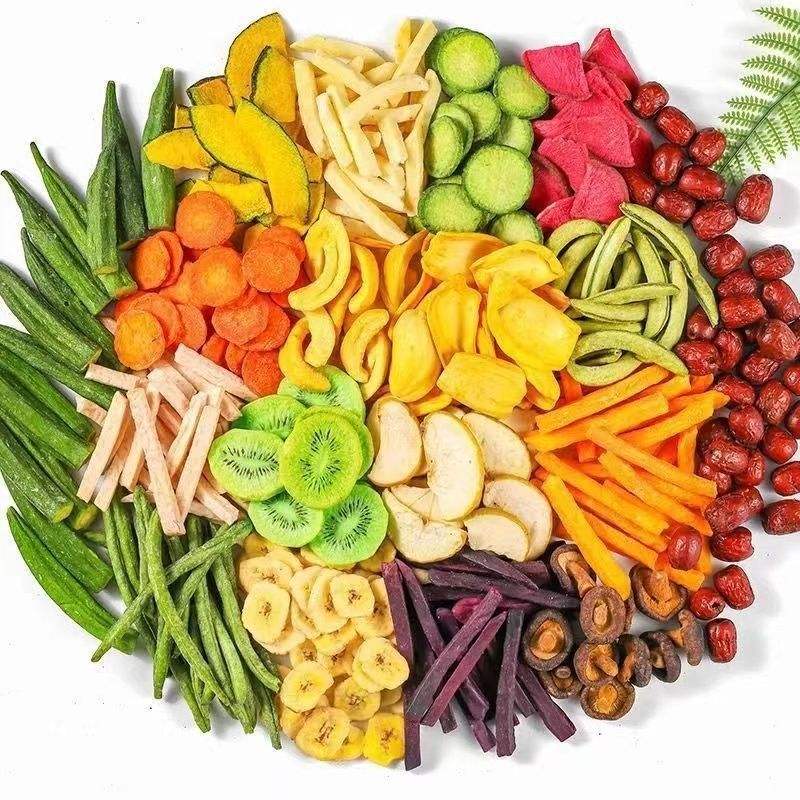
In addition to freeze-dried vegetables, freeze-drying technology has many other applications in the food industry. Would you like to learn more? Consider following these articles:
How Do You Freeze Dry Strawberries?
How Do You Make Freeze Dried Skittles?
Freeze-Dried Raspberries: A New Tasty Snack Option
Astronaut Ice Cream: A Novel Culinary Experience
Freeze Dry Meat—A New Way To Preserve Meat


